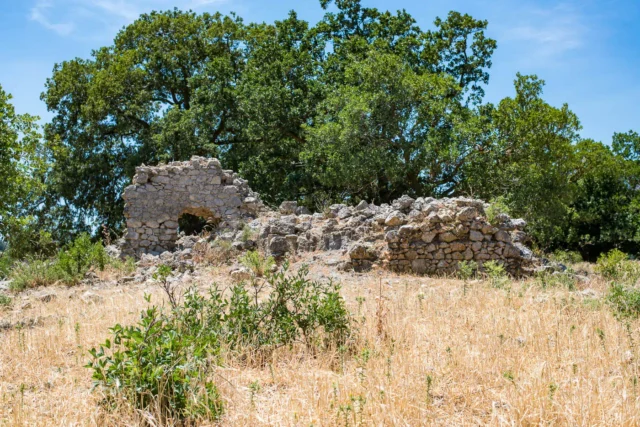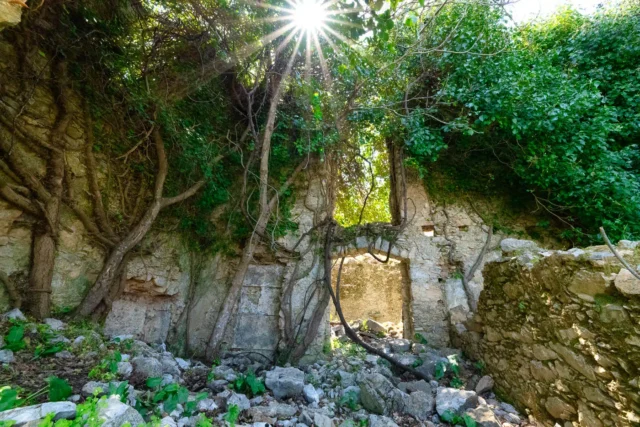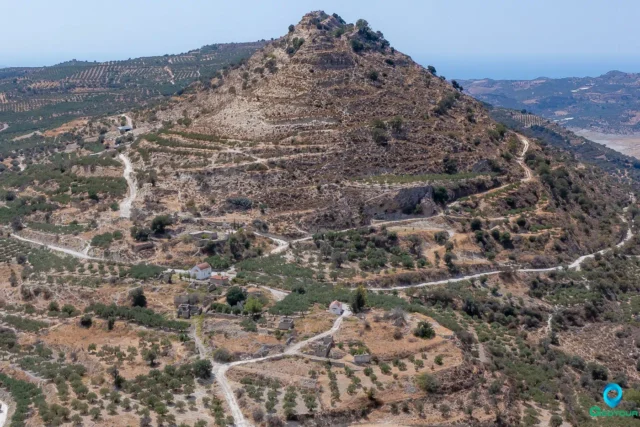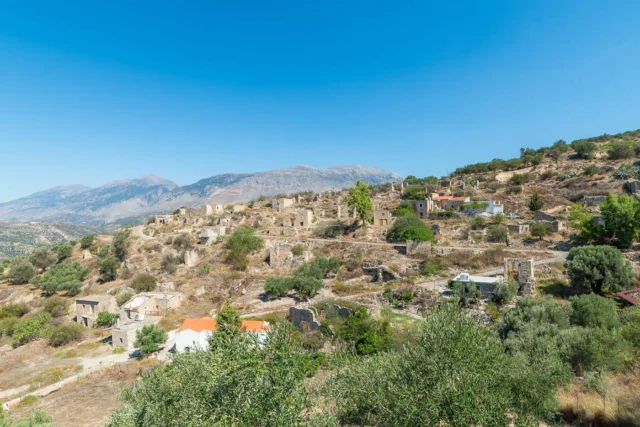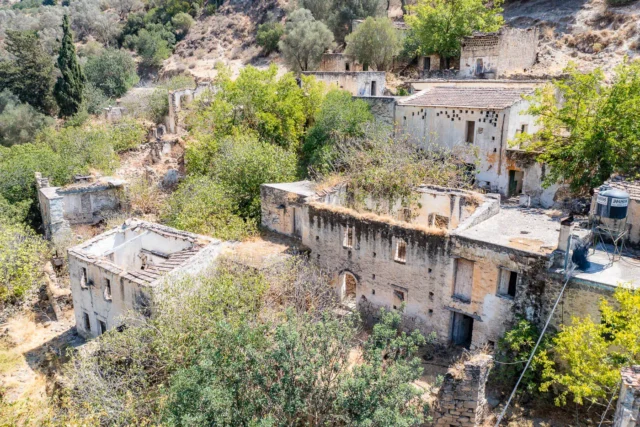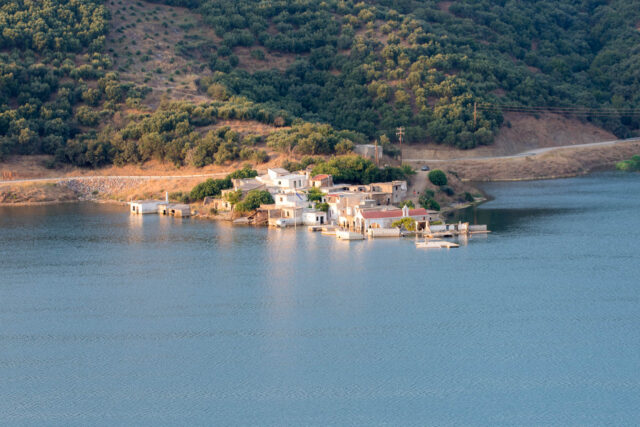
Etia, Sitia
Etia, located in the Armeni municipality in eastern Crete, is an uninhabited village with a rich history dating back to the Byzantine era. Known for its well-preserved Venetian mansion, the De Mezzo, Etia was once a major settlement. The village also features the churches of Agia Aikaterini and Agios Ioannis, both bearing traces of Byzantine wall paintings. The De Mezzo mansion, a significant example of Venetian architecture, has undergone extensive restoration. Etia, though deserted, remains a protected traditional settlement and a testament to Crete's diverse heritage.
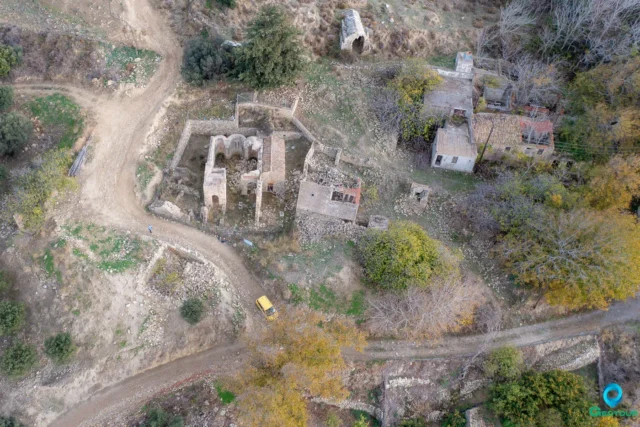
Mikra Episkopi
Mikra Episkopi is an abandoned village in Crete, Greece. Once known as the seat of the Diocese of Arcadia, it is now deserted with dilapidated houses and overgrown paths. The village is located 7 km southwest of Arkalochori and 1 km north of Partira. Despite its current state, Mikra Episkopi holds historical significance, particularly due to the ruined church of Sotiras Christos (Savior Christ), a Venetian-era structure built upon the remains of an earlier basilica. The church features a cruciform architectural style with a dome and a narthex, with some walls, columns, and capitals still visible. Additionally, the village has the church of Panagia (Virgin Mary) with Venetian-era frescoes and the ruins of the church of Agios Dimitrios (Saint Demetrius).
The population of Mikra Episkopi has dwindled over the centuries, from a mix of Christians and Muslims in the 1800s to becoming completely abandoned in the 1990s. Recent census data shows a slight increase in population, but the village remains largely deserted.
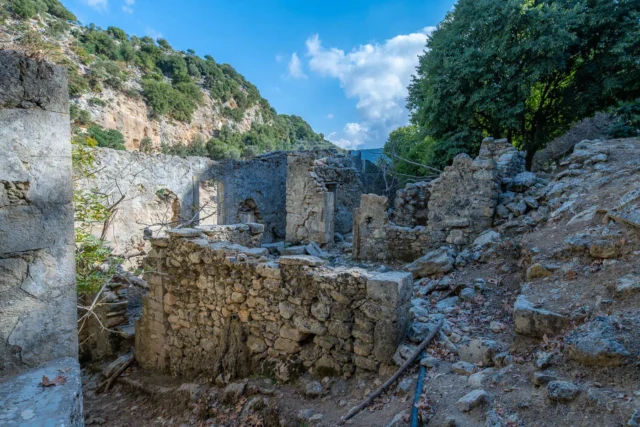
Mouses abandoned village
Mouses, an abandoned village near Mourtzana in Rethymno, Crete, reflects the island's rural past. The village's history likely mirrored other Cretan settlements, with population fluctuations due to historical events and economic shifts. Abandoned watermills highlight Mouses's role as a center for milling grain in the pre-industrial era, crucial for producing flour and other grain-based products. The village's current state reflects the rural depopulation seen in Crete during the 20th century. Mouses stands as a testament to the passage of time, with its abandoned watermills offering a glimpse into traditional practices. Although no longer inhabited, Mouses retains historical significance, providing a resource for understanding Crete's rural past.
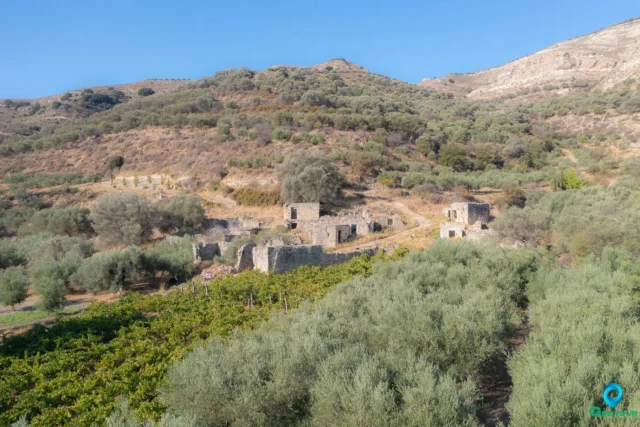
Psalida abandoned village
Psalida (Ψαλίδα), an abandoned village in Gergeri, Crete, offers a glimpse into the island's past. Dating back to the 16th century, the village was once home to farmers, as evidenced by animal feeders found in the ruins. Historical records from 1583 mention Psalida as a dependency of Gergeri with 60 inhabitants. Today, only the stone houses remain, standing as a testament to the traditional way of life. Psalida's location provides stunning views of the surrounding countryside. The village is a reminder of Crete's rich history, including the Greek War of Independence and conflicts between the Christian and Muslim populations.
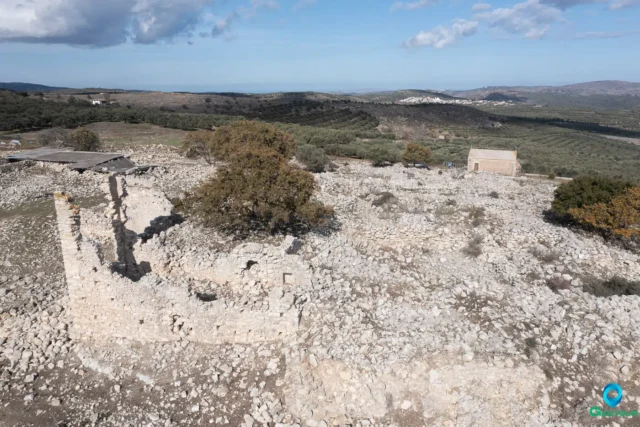
Rouma abandoned village near Alagni
Rouma, a deserted village east of Alagni in Crete, takes its name from the Cretan word for "river stream." The village, formerly abundant in oak and pine trees, was abandoned after a plague outbreak. Survivors relocated to Alagni. Despite its abandonment, Rouma is remembered for the church of Panagia tou Roumatou (Virgin Mary of Rouma), a landmark that remains historically and religiously significant. A 1630 census recognized Rouma as a separate village. The restored church of Panagia tou Roumatou is a reminder of Rouma's past, with excavated sacred vessels further highlighting its history.
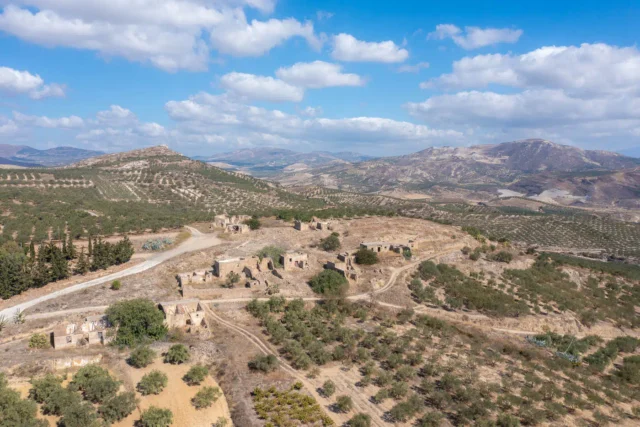
The Abandoned Village of Velouli near Apoini
Velouli, a deserted village 44 km south of Heraklion, Crete, boasts a 400-year history. Once inhabited by Cretan Muslims and Asia Minor refugees, it played a key role in WWII's Cretan resistance. The Valavanis family housed resistance figures like Podias, Petrakogiorgis, and the Bantouvas brothers. The village features the Byzantine church of Panagia Velouliani, with an inscription dating back to 1209. Though abandoned today, with residents migrating to Apoini, Velouli's deserted houses and resilient church stand as testaments to its rich past.

The Settlement of Vitsilia
Vitsilia, an abandoned medieval village in Crete, provides valuable insights into fortified settlements of the era. Located in Monofatsi, Heraklion, the village was inhabited by villeins and free peasants. A 1387 document reveals details about its structure, including a northern wall, two entrances, and two towers. The village, with a naturally fortified position, likely served as a watchtower in earlier times. Archaeological evidence suggests the presence of houses, a church, and a cemetery. Despite its small size, with a population never exceeding 60, Vitsilia holds historical significance. Today, five houses and the Venetian-era Church of the Holy Cross have been restored.
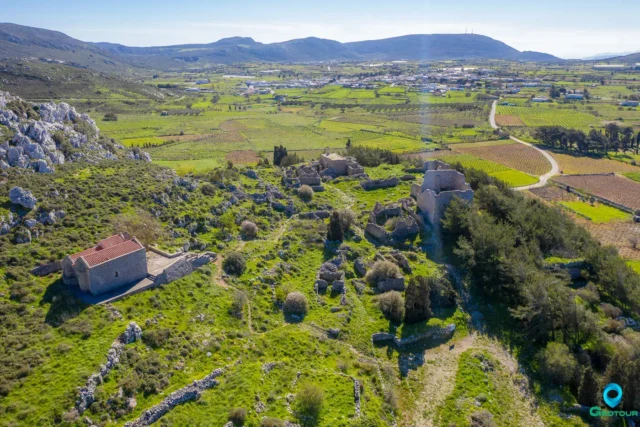
Voila abandoned village
Voila, an abandoned village near Chandras in Sitia, Crete, offers a glimpse into Crete's Venetian and Ottoman past. The village, deserted since the 19th century, likely owes its name to a Byzantine surname, a term for boyars, or a place for oxen. Voila was once a sizeable village, documented in Venetian censuses of the 16th century with over 300 inhabitants. A prominent landmark is the Venetian tower, featuring a 1742 Turkish inscription and carvings of axes, cypresses, and pentagrams. Local tradition links the tower to a Janissary named Tsin-Alis. The village also houses the ruins of the 15th-century church of Agios Georgios and Panagia, likely built by the Salamon family, potential ancestors of the poet Dionysios Solomos. Two fountains with Turkish inscriptions and remnants of a Venetian castle further illustrate Voila's rich history.

